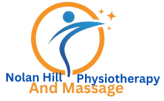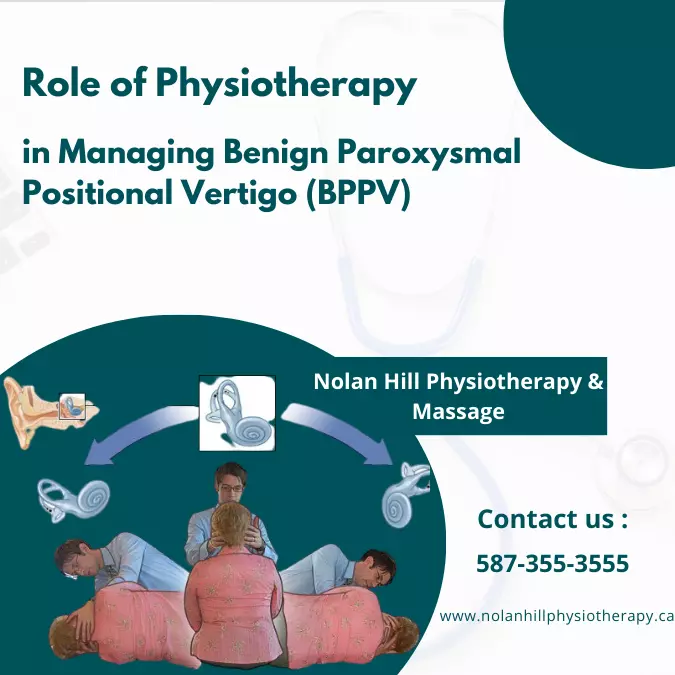Role Of Physiotherapy In Managing Benign Paroxysmal Positional Vertigo (BPPV)
Have you ever felt a sudden sensation of dizziness or spinning when you move your head? If so, then you may have experienced the symptoms of benign paroxysmal positional vertigo (BPPV). This condition affects millions of people worldwide and can be a debilitating experience. Fortunately, physiotherapy has been shown to be an effective intervention for managing BPPV.
In this article, we will explore the role that physiotherapy plays in managing this condition and discuss the benefits it provides. We’ll look at interventions such as postural training, education and advice, and how this help to reduce symptoms and improve quality of life.
Together, let’s discover how physiotherapy can bring freedom from BPPV!
Overview of BPPV
BPPV can be a real pain, but don’t worry – with the help of physiotherapy, it can easily be managed! Benign Paroxysmal Positional Vertigo (BPPV) is an inner ear disorder and one of the most common causes of vertigo. It occurs when tiny calcium crystals become displaced from their normal location in the inner ear and enter into one or more semicircular canals. This results in dizziness when changing head positions. Fortunately, physiotherapy is an effective treatment for managing BPPV symptoms.
Physiotherapists use specific maneuvers that reposition the crystal back to its original place. They also provide education about positional avoidance and strategies to reduce symptoms such as habituation exercises which involve repetitive head movements. Furthermore, they recommend lifestyle changes such as reducing caffeine intake, limiting alcohol consumption and improving overall posture. All these measures help alleviate BPPV symptoms while providing an overall sense of freedom that patients seek after suffering from this condition.
Physiotherapy Interventions
Nolan Hill Physiotherapy & Massage are experts in the use of manual therapy techniques to reduce symptoms associated with BPPV. We also provide vestibular rehabilitation exercises to retrain the patient’s balance system and improve their ability to move safely and confidently. Finally, we provide balance training to help patients build strength and coordination which aids in preventing future episodes.
Manual Therapy Techniques:
We may be able to help you find relief from BPPV through manual therapy techniques. Repositioning maneuvers, such as the Epley maneuver and the Semont maneuver, can help to move particles in your inner ear that are causing vertigo symptoms. In addition, we can provide exercises that will help to strengthen your vestibular system and improve balance. This is known as cervical vestibular rehabilitation (CVR) and involves a series of eye movements and head positions designed to retrain you brain’s perception of movement.
At our clinic, we understand how difficult it can be to cope with BPPV. That’s why we strive to provide personalized care that offers empathy and understanding along with professional expertise. By using manual therapy techniques tailored specifically for you, we hope to provide you with relief from your vertigo symptoms so you can regain the freedom of movement that was restricted by your condition.
Browse: BPPV Treatment in NW Calgary
Vestibular Rehabilitation Exercises:
By engaging in vestibular rehabilitation exercises, you can take an active role in managing your vertigo symptoms and restoring balance to your life. These exercises specialize in retraining the brain to recognize false signals coming from the inner ear as well as addressing any skeletal or muscular imbalances that may be contributing to vertigo. Vestibular rehabilitation exercises involve a combination of eye movements, head and body positions, balance activities, and aerobic exercise designed to reduce dizziness and increase mobility.
When done correctly, these exercises can help improve symptoms by increasing awareness of postural control, improving coordination and strength, enhancing balance reactions, reducing fear of movement-induced dizziness, normalizing compensatory strategies such as head turning or body bracing with movement. With time and consistency in performing these exercises correctly, you will begin to see an improvement in your vertigo symptoms allowing you to live a more balanced life.
1. Balance Training-
Improving your balance can be a key component of managing your vertigo symptoms, and balance training is an important part of the rehabilitation process. Balance training helps to reduce dizziness and improve overall stability, which can lead to better control of vertigo symptoms. Through this type of therapy, you can learn how to identify and correct any underlying issues that may be contributing to the vertigo.
Physiotherapists will typically start by assessing any postural or muscle imbalances that could be causing the dizziness or imbalance. Then they will work with you on exercises designed to strengthen your core muscles and improve your coordination, posture, flexibility, strength, and balance. These exercises are tailored specifically for each individual’s needs and often involve activities such as standing on one foot while changing positions quickly or even standing on a wobble board or foam pad. With regular practice and guidance from a trained physiotherapist, these exercises can help reduce episodes of vertigo significantly over time.
2. Postural Training:
You can manage your benign paroxysmal positional vertigo (BPPV) symptoms by developing postural training skills. Physiotherapy is an effective tool in helping you achieve this, as it involves teaching your body how to move correctly and efficiently. Postural training helps to improve balance, reduces fatigue and strengthens the muscles that support the spine and pelvis. This helps reduce the risk of falls, which are common in people with BPPV.
Furthermore, postural training will also help you maintain good posture throughout all activities, from everyday tasks such as sitting and standing to more strenuous physical activities like running or playing sports. With proper guidance from a physiotherapist, you can learn how to use correct body mechanics while performing daily tasks; this will ultimately increase your overall quality of life.
Browse: Effectiveness of Home Exercises in Treating BPPV
3. Education and Advice
Apart from postural training, education and advice can be invaluable in living with BPPV. Physiotherapists have an important role in helping patients understand the condition, its symptoms and risks associated with it. By providing information on how to avoid exacerbating factors and detailing how to manage symptoms when they arise, physiotherapists can help empower those living with BPPV to take control of their lives.
Nolan Hill Physiotherapy & Massage also offers advice on lifestyle changes that are beneficial for managing BPPV such as avoiding activities that may cause dizziness or imbalance and getting enough rest. This helps create a balanced routine which will reduce the risk of episodes occurring or worsening.
Also, Nolan Hill Physiotherapy & Massage provides support in developing strategies to deal with any anxiety or depression caused by the condition, helping patients feel more confident in tackling their day-to-day life.
Benefits of Physiotherapy in Managing BPPV
We know that BPPV can be a debilitating condition, causing dizziness and nausea. Physiotherapy can be a life-saver for those struggling with it, giving them the tools to take control of their condition and lead a fulfilling life. Physiotherapists are specially trained to diagnose and treat BPPV. They will use techniques such as head repositioning manoeuvres or vestibular rehabilitation exercises to reduce the symptoms of vertigo and help improve balance, coordination, strength and flexibility.
By addressing any underlying issues like poor posture or reduced muscle strength that may be contributing to the problem, physiotherapists at Nolan Hill Physiotherapy & Massage can work towards alleviating all of the associated symptoms. As well as providing relief from unpleasant sensations, physiotherapy also helps people with BPPV regain confidence in their ability to function normally in everyday situations such as driving or going out for leisure activities. Ultimately, it is an empowering process which enables people to take back control of their lives again by managing their own condition confidently.
Frequently Asked Questions
What are the potential side effects of physiotherapy interventions for BPPV?
We may experience dizziness, headaches, nausea, or neck soreness during physiotherapy for BPPV. However, these side effects are usually temporary and should subside soon. We can trust our therapists to help us safely manage the condition.
How long does it typically take to see results from physiotherapy for BPPV?
We know it’s tough living with BPPV, but the good news is that physiotherapy can help! Results typically take anywhere from a few days to a few weeks to appear. With our expertise and your commitment, we’ll get you back on track in no time!
Are there any medications that can be used in addition to physiotherapy for BPPV?
Yes, there are medications that can help with BPPV in addition to physiotherapy. These may include anti-vertigo drugs, antihistamines, and anticholinergics. With the right combination of treatments, you can find relief from your symptoms and gain freedom from BPPV.
How often should postural training exercises be done for BPPV?
We artfully craft a treatment plan of postural training exercises tailored to each patient’s needs, typically performed 3-4 times a week. With consistency, we empower them to regain control over their vertigo symptoms and experience newfound freedom.
Are there any lifestyle changes that can be made to help manage BPPV?
We recommend lifestyle changes such as reducing stress, avoiding alcohol and caffeine, exercising regularly, and sleeping on your back to help manage BPPV. Let’s take charge of our health together and make positive changes that will lead us to a healthier life!

